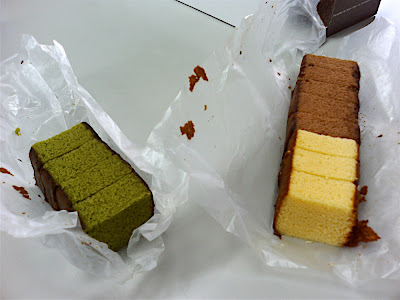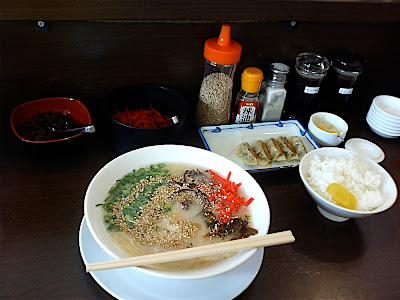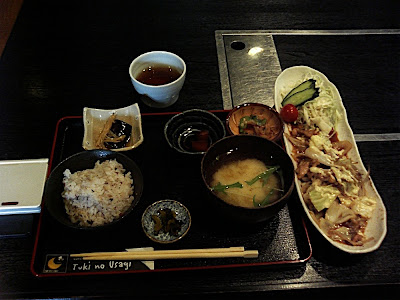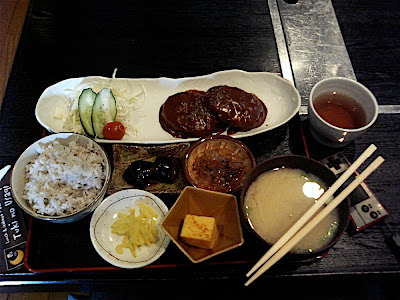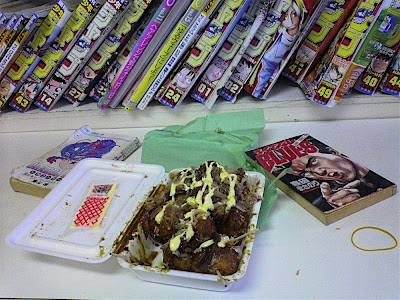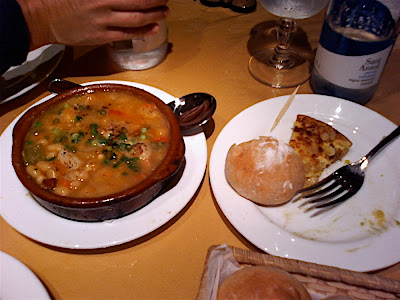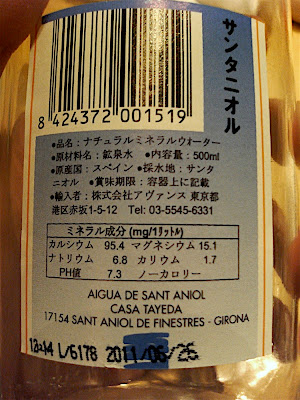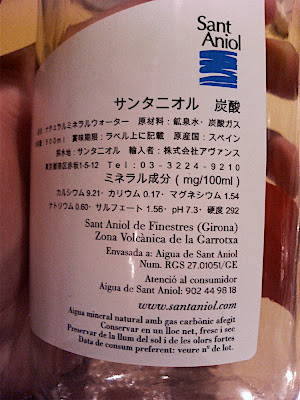Una compañera de trabajo ha traído castela para todos. Es un bizcocho típico de Nagasaki, pero se vende en todo Japón. Había tres tipos: de chocolate, de queso y de té verde. Pero los sabores eran mucho más suaves que los colores. El de queso y el de chocolate no sabría distinguirlos de bizcochos españoles.
会社の仲間がカステラをお土産に持ってきてくれた。長崎の名物だけど、チーズ味とチョコレート味は、スペインに似ているケーキがあって、違いが分からなかった。
A co-worker brought «castella» as a present for all. It’s a typical sponge cake from Nagasaki, and it’s well known — at least in Fukuoka. There were three kinds: green tea, chocolate and cheese. Their flavors were softer than their colors and, actually, I wouldn’t be able to tell the cheese or chocolate ones apart from a Spanish sponge cake.
Lo curioso es que este bizcocho en realidad lo llevaron los misioneros portugueses en el siglo XVI a Nagasaki (el único puerto internacional de Japón en la época) y lo llamaban pão de Castela (pan de Castilla), con lo que la receta se supone original de territorio español (Castilla fue uno de los reinos que se unieron para formar España).
ちょっと調べてみたら、カステラを最初に長崎に持ってきたのは16世紀のポルトガルの宣教師だった。ポルトガル語で「pão de Castela」といって、意味は「カスティーリャのパン」。カスティーリャ王国は当時のイベリア半島にあった国で、他の王国と合体してスペインになった。という事は、カステラの作り方はスペインかその当時のスペインの植民地から伝わってきたでしょう。
The interesting part is, this cake was brought to Nagasaki (the only international harbor in Japan at that time) by Portuguese missionaries during the 16th century. Pão de Castela means «bread from Castilla» in Portuguese, and Castilla was one of the realms which eventually formed Spain. This probably means that the recipe originated in Spain or in one of the colonies Spain had at that time.

